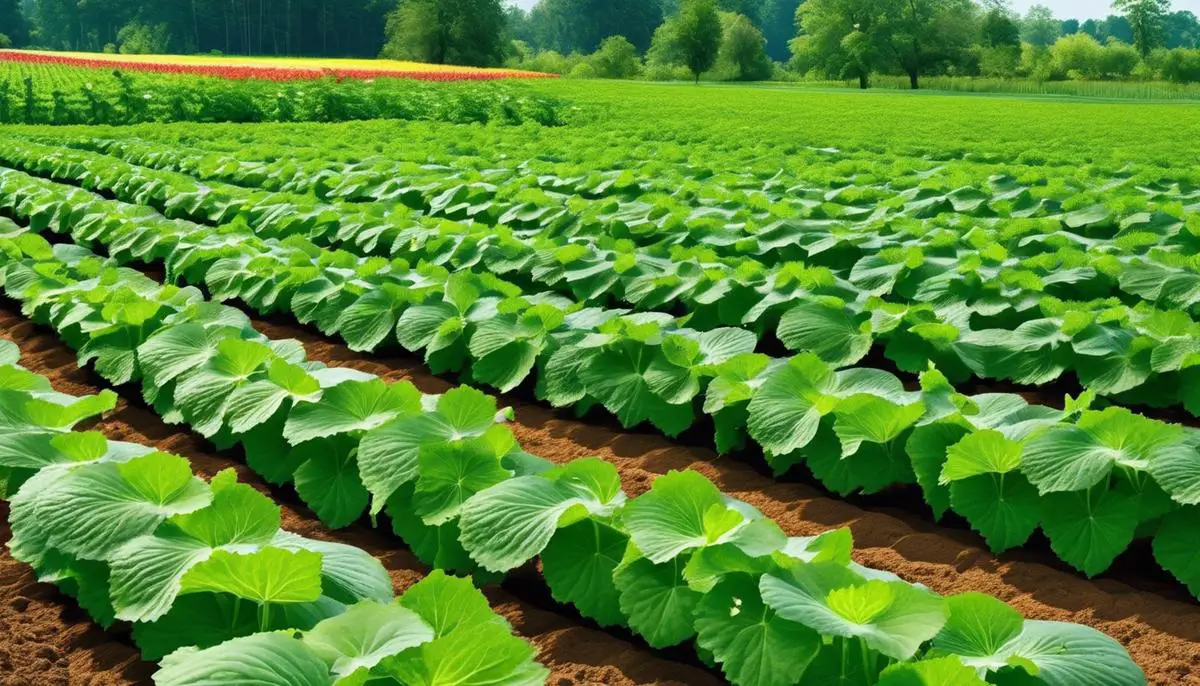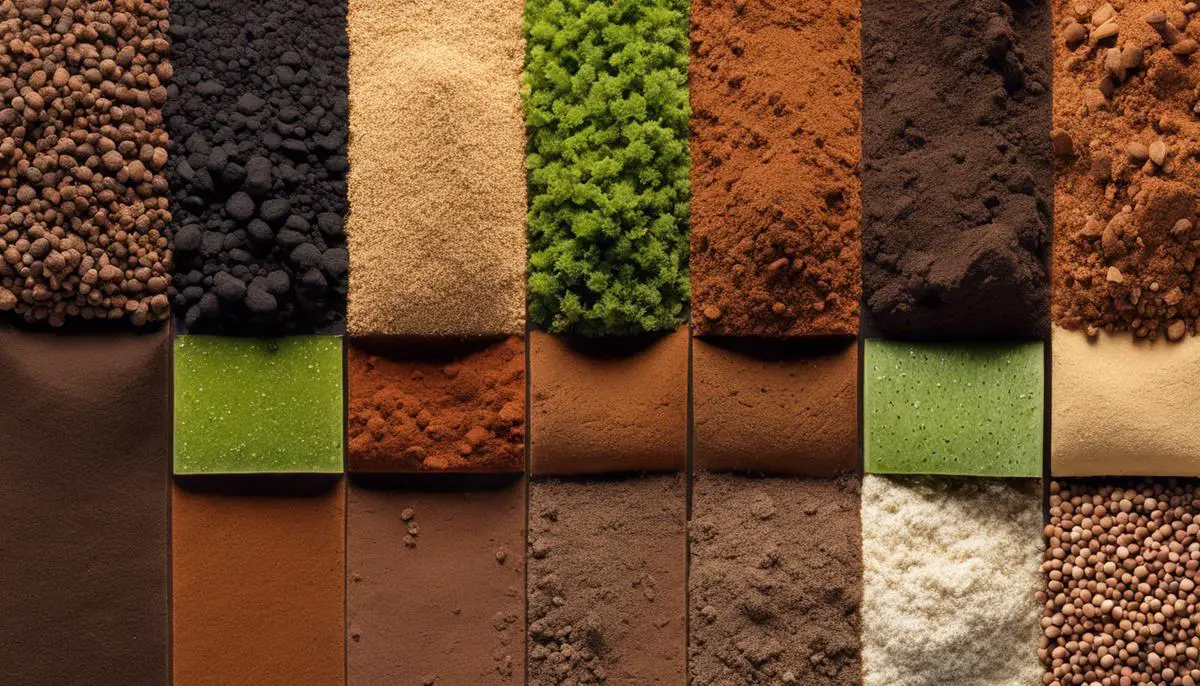If you’re endeavoring to grow crisp, flavorful cucumbers, mastering the right soil conditions is a key component to that quest. If you thought all soil was created equal, this comprehensive guide will not only enlighten you about the critical differences but also how they surprisingly impact cucumber growth. It takes a microscopic look at soil composition, particularly clay, silt, and sand; their respective roles and the importance of striking the right balance between them. Furthermore, this guide will delve into the topic of soil pH and nutrient levels—two lesser-known, yet equally crucial factors that greatly influence cucumber plant health and productivity. Lastly, it imparts practical soil preparation methods to ensure a conducive environment for your cucumbers right from the get-go.
Understanding Soil Composition
The Key Role of Soil Composition in Nurturing Healthy Cucumber Plants
Soil composition—sounds pretty scientific, right? But fear not, fellow cucumber enthusiasts! In simple terms, it’s just what makes up your soil. And yes, it’s absolutely crucial for achieving luscious and thriving cucumber plants. Let’s delve into why soil composition matters so much and how we can use this knowledge to cultivate the best cucumbers on the block!
Reader Poll: What online courses would interest you?
Cucumbers are screening plants, which means they bear their fruit on a vine. But the success of these climbing beauties heavily depends on the medium they grow in—that’s the soil. Soil is not just dirt; it’s a complex ecosystem made up of different elements that can influence plant growth to a tremendous extent. The right balance of minerals, nutrients, and pH levels in the soil can make the difference between a successful bumper crop and a disappointing harvest.
One significant element in the soil composition is organic matter. It’s pretty much the superhero of soil ingredients. Comprising decaying plants and animals, organic matter enriches the soil with essential nutrients that cucumbers need to thrive. Moreover, organic materials also improve soil structure, enhancing its ability to hold onto moisture and nutrients while promoting good drainage – essential conditions for healthy cucumber growth.
Every plant has a preference for a certain soil pH level, and cucumbers are no exception. They prefer a slightly acidic to neutral pH, in the range of 6.0 to 7.0. Ensuring that the soil pH is at the recommended levels guarantees that nutrients in the soil are readily available to the plant. A soil pH test, easily performed with a simple kit from any garden supply store, will reveal if any modifications are needed.
Subscribe to our newsletter!
When it comes to minerals, cucumbers have three main needs: nitrogen, phosphorus, and potassium, often referred to in gardening circles as N-P-K. Nitrogen boosts leaf growth, an essential aspect of photosynthesis, while phosphorus is essential for root development and fruiting. Potassium helps with the overall functioning and vigor of the plant. The best way to fulfill these mineral requirements is to use a balanced fertilizer, ideally in the ratio 10:10:10 of N-P-K.
Cucumber plants also appreciate well-aerated soils, which give roots the space they need to grow and access oxygen—a crucial, and often overlooked, factor for plant growth. Loamy soil is ideal as it combines silt, sand, and clay in just the right proportions. It provides excellent water retention and good drainage, all while being rich in nutrients and allowing for healthy root penetration.
In conclusion, understanding the composition of the soil isn’t rocket science, but it makes a world of difference to your cucumber plants. By keeping tabs on soil’s organic matter content, its pH level, mineral composition, and aeration, you’re setting your cucumber plants up for success. And as gardeners, isn’t that what we’re aiming for – a prolific, healthy, and rewarding harvest? Here’s to excellent soil and even better cucumbers! Keep gardening and keep growing!

Soil pH and Nutrient Levels
In our cucumber cultivation journey, we’ve already delved into soil composition, soil pH, organic matter, minerals, aeration, and soil type. Picking up from where we left off, let’s wade into the deeper waters of pH and nutrient balance and their effects on cucumber growth.
The pH balance of the soil isn’t just a mere number; it is the lifeblood of your cucumber plant’s nutrient absorption system. As previously discussed, the optimal pH range for cucumber growth is between 6.0 and 7.0.
But you may be wondering, what happens if the pH veers off from this ‘sweet spot’? Well, the answer lies in the soil’s chemistry. When soil acidity increases (lower pH), essential nutrients like phosphorus, potassium, and calcium become less available to the plants. This lack of nutrients stunts their growth and, by extension, affects the yield. On the other side of the spectrum, extremely alkaline soil (higher pH) reduces the availability of vital micronutrients like iron, zinc, and manganese, leading to similar detrimental effects on the plant.
However, it’s not all doom and gloom! There are several ways to control and maintain soil pH. For instance, to raise a too-acidic soil’s pH, you could employ organic materials like ground limestone or wood ash. Sulphur or aluminum sulfate can be applied to dial down the pH of excessively alkaline soils.
Monitoring soil pH is an ongoing activity. Several environmental factors can affect the soil’s pH over time. Hence, consistent testing and amendment is pivotal for a successful harvest.
Now, let’s segue to the nutrient profile of the soil. Cucumbers have quite a healthy appetite for nutrients. They principally thrive on three primary nutrients, nitrogen, phosphorus, and potassium, often referred to as NPK.
Nitrogen is the key element that fuels the growth of leaves and stems, giving the plant its vibrant, lush green color. Lack of nitrogen can lead to yellowing leaves and stunted growth. Phosphorus aids with energy transfer and root development, while potassium promotes general vigor, strengthening immunity against pests and diseases.
But what happens when the balance among these nutrients gets thrown off? An excess of nitrogen, for example, makes the plant overly enthusiastic about leaf production at the expense of fruit development. On the other hand, a lack of phosphorus or potassium would cause the plant to be weak, making it susceptible to diseases.
Maintaining the nutritional balance, much like controlling pH, needs constant vigilance. Soil testing kits can be your ally in this mission. Regularly testing your soil can help you perceive nutrient imbalances before they do significant harm.
With soil pH and nutrient balance, we realize it’s more than just playing in the dirt. It’s about nurturing a thriving ecosystem that can skillfully nourish the cucumbers from seeds to salads. One might even say that playing with soil pH and nutrients is a gardening hobby within the hobby of cucumber cultivation. And isn’t that something worth digging into?

Soil Preparation Techniques
After gearing up with thorough knowledge about soil composition and its importance in cucumber farming, let’s move ahead to explore some efficient soil preparation methods for cultivating our crunchy friends – the cucumbers. Remember, idea and methods go hand in hand for success.
First
, let’s talk about an incredibly crucial, but at times, overlooked part of soil preparation: soil conditioning. Despite having the perfect soil composition, soil also needs to be soft and loose for the healthy growth of cucumber plants. Hence, undertaken before planting, soil conditioning allows the development of a loose structure where roots can penetrate effortlessly and water can flow efficiently. The use of soil conditioners such as gypsum or lime is common in soil conditioning. Not only do these conditioners make heavy soils lighter, but they also improve the structure of sandy soils which are typically low in nutrients.
Next
, we tackle the process of soil amendment by adding organic matter or compost. Considered as the gardener’s gold, compost enriches the soil with nutrients and fosters the growth of beneficial microorganisms – the good guys of plant growth. Adding a good 2-3 inches of compost to the planting area and blending it with the existing soil is recommended for a high yielding cucumber farm.
Don’t forget
the importance of crop rotation. Planting the same crop on the same ground year after year, depletes the soil of certain nutrients, upsetting the soil health. In cucumber farming, it’s advised to plant leguminous crops like peas or beans in the previous season as they “fix” nitrogen into the soil, which is beneficial for subsequent crops.
After
providing necessary nutrients and conditioning the soil, it’s time to pamper the soil with mulch. Covering the soil with organic mulch like straw or chopped leaves keeps the soil cool, conserves moisture, and most importantly, prevents the growth of weeds which are major nutrient thieves.
Finally
, a word of caution – over irrigation. Cucumbers love hydration but too much water can lead to waterlogged soil and thus, root rots. Investing in a good irrigation system that ensures only an optimal amount of water is delivered to the plants is a smart move.To wrap it all up, soil preparation for cucumber farming, though seemingly intricate, is actually simple when you understand the needs of the crop as well as the soil. Proper conditioning and amendment, smart crop rotation, judicious mulching, and controlled irrigation are the keys of a successful cucumber cultivation. Happy Farming!

So, don’t let soil mysteries deter you from growing a bountiful cucumber garden. Understanding soil composition—sand, silt, clay—and their respective roles will equip you to improve your present soil condition effectively. Recognizing the vital influence of soil pH and nutrient content on cucumber growth and using that knowledge to your advantage will, no doubt, enhance your overall yield. Furthermore, learning and implementing effective soil preparation techniques such as the addition of organic matter, pH testing, and more, can profoundly improve your gardening experience. Reflect upon the knowledge you’ve acquired and put it into action; optimal cucumber growth isn’t a far dream anymore! True, it takes a little time and effort, but the crunchy, refreshing cucumbers you’ll harvest are certainly worth it. Here’s to a successful cucumber gardening journey!

